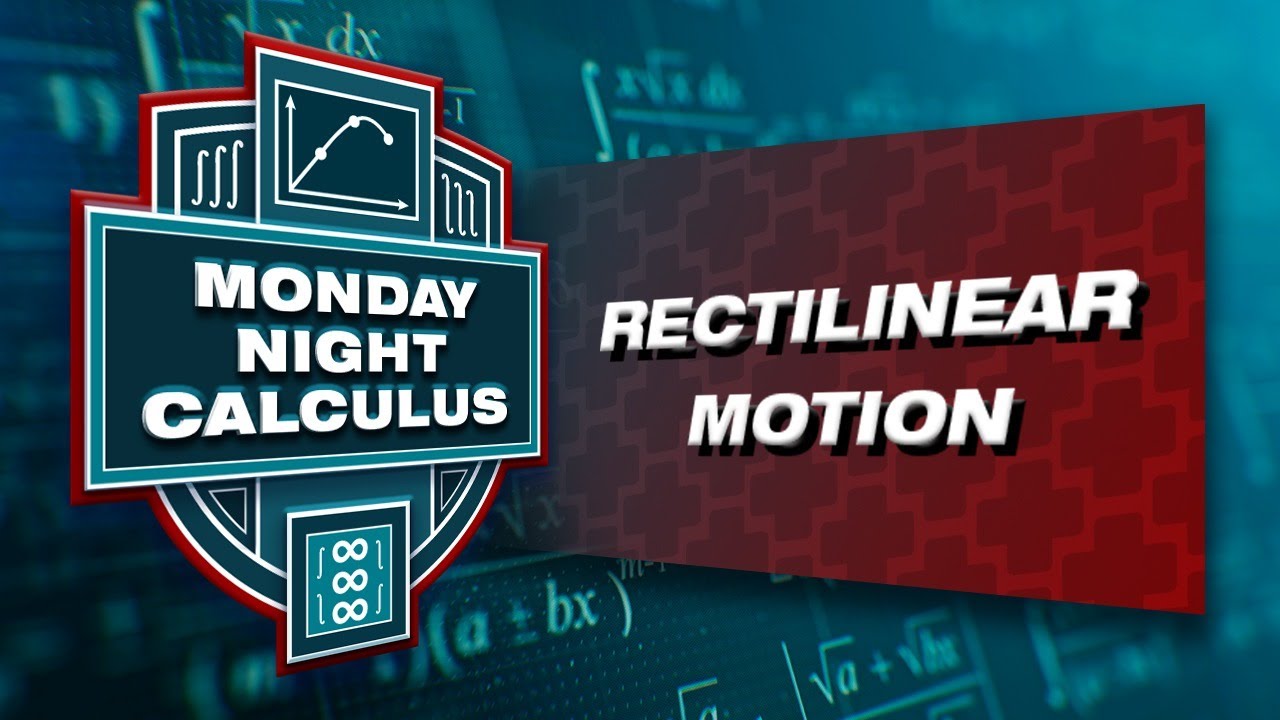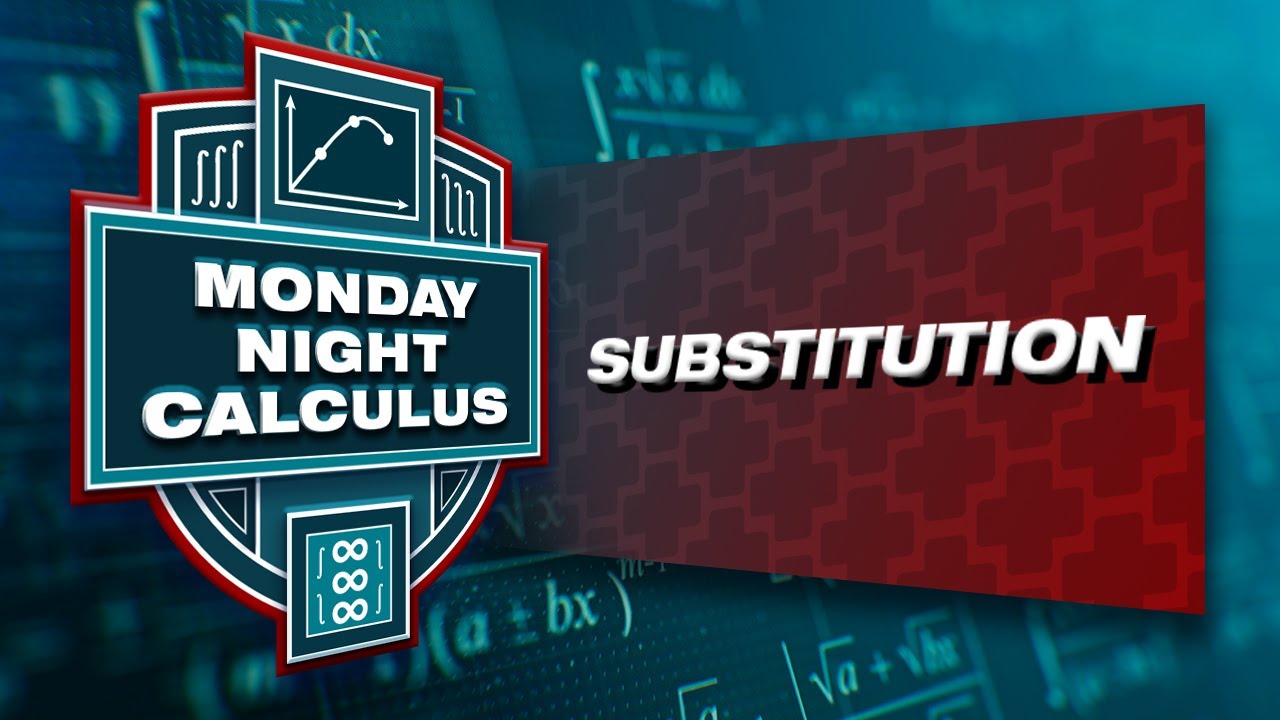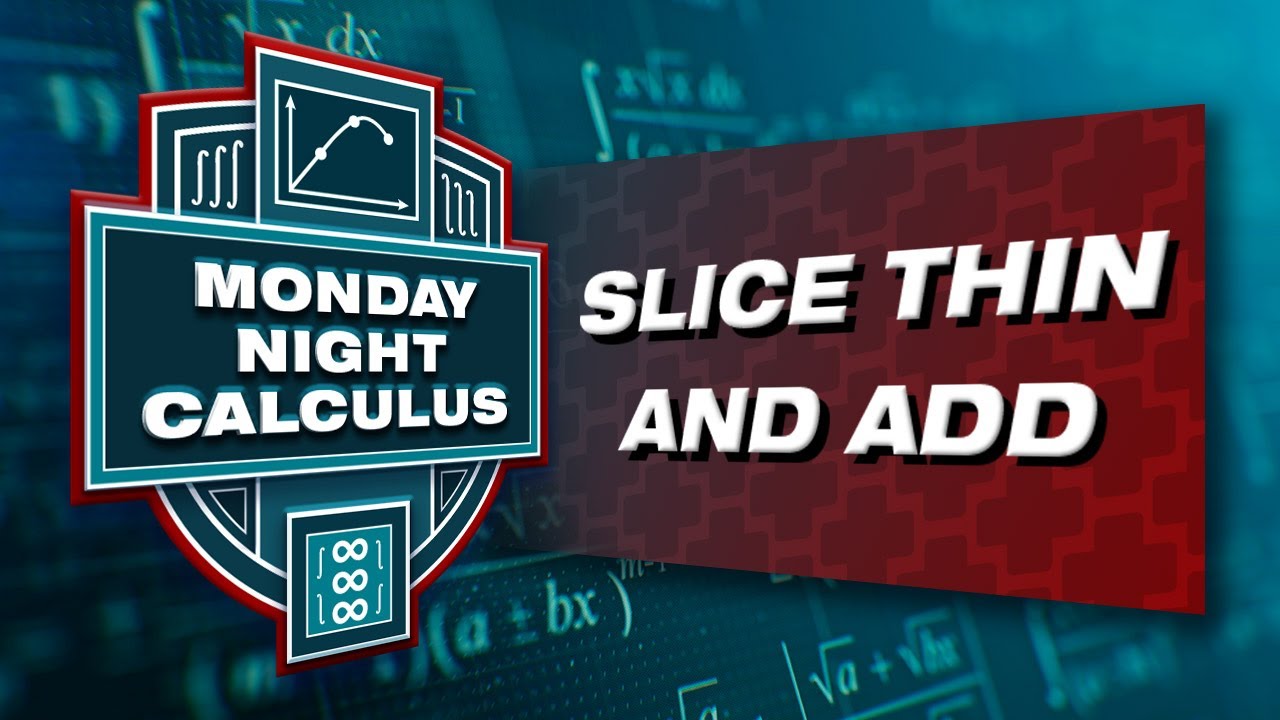Monday Night Calculus: Volume
TLDRIn this engaging AP Calculus session, host Curtis Brown is joined by Steve Kokoska and Tom Dick to explore the concept of volumes of solids of revolution. The session delves into the disk and washer methods for calculating volumes, with a focus on the TI-Nspire technology for visualization and problem-solving. The presenters tackle a variety of problems, emphasizing the importance of understanding the axis of revolution and the relationship between the integrand and the variable of integration. The session also highlights the use of technology in the AP Calculus exam and encourages students to engage with the material to deepen their understanding of calculus concepts.
Takeaways
- 📘 The session focused on calculating the volume of solids of revolution using the disk and washer methods, emphasizing their application in AP Calculus.
- 👨🏫 Curtis Brown hosted the session with Steve Kokoska and Tom Dick, who presented various problems and demonstrated the use of TI technology in solving them.
- 🚀 The importance of using problem sets and engaging students in Monday night calculus sessions was highlighted to deepen their understanding and application of calculus concepts.
- 💡 The disk method was explained with emphasis on the formula for volume, which involves integrating the square of the radius (r^2) with respect to x when revolved around the x-axis.
- 🔄 The washer method was introduced for situations where the axis of revolution is not a bounding curve, involving the subtraction of the areas of two circles (inner and outer) to find the volume.
- 📊 Steve Kokoska provided a comprehensive review of the general idea behind volumes of solids, including the formula derivation and its application to various problems.
- 🌐 Tom Dick showcased the use of TI technology, particularly the TI-Inspire, to visualize and solve problems involving volumes of solids of revolution and other calculus topics.
- 📈 The session included examples of solving for volumes when revolving regions bounded by parabolas, exponential functions, and power functions around different axes.
- 🎓 The presenters encouraged AP calculus teachers to use the provided resources and problem sets in their classrooms to enhance student learning and preparation for the AP exam.
- 🔗 Resources like the TI-InFocus website were mentioned as valuable tools for educators to access additional materials for teaching calculus, including videos and problem sets.
- 📝 The session concluded with a reminder for teachers and students to utilize the available resources, engage in problem-solving practices, and apply concepts learned in the classroom.
Q & A
What is the main topic of the calculus office hours session?
-The main topic of the calculus office hours session is volume, specifically focusing on volumes of solids using the disk and washer methods.
Who are the hosts and guests of the calculus office hours session?
-The host of the session is Curtis Brown, and the guests are Steve Kokoska and Tom Dick.
How can one access the information and resources for the calculus office hours?
-The information and resources can be accessed through a blog on the TI website and the bulletin board where links for previous problem sets and current sets are posted.
What is the formula for calculating the volume of a solid using the disk method?
-The formula for calculating the volume of a solid using the disk method is V = π times the definite integral from a to b of the radius squared dx, where 'a' and 'b' are the limits of integration and the radius is a function of 'x'.
What is the key concept behind the washer method for finding the volume of solids?
-The key concept behind the washer method is to find the volume of the solid by subtracting the volume of the inner solid (smaller disk) from the volume of the outer solid (larger disk), which is π times the difference of the outer and inner radii squared.
How does one determine the variable of integration when using the disk method?
-To determine the variable of integration when using the disk method, one should consider the axis of revolution and whether it acts as a bounding curve. If the radius is perpendicular to the x-axis, integrate with respect to x; if it's perpendicular to the y-axis, integrate with respect to y.
What is the significance of the bell-shaped curve in probability and statistics?
-The bell-shaped curve is significant in probability and statistics as it represents the normal probability distribution, which is fundamental for analyzing data and making inferences in various statistical applications.
How can technology, such as the TI-Inspire, be used to solve calculus problems involving volumes of solids?
-Technology like the TI-Inspire can be used to solve calculus problems involving volumes of solids by providing numerical solutions when exact algebraic solutions are not feasible, and by offering graphical representations to aid in visualization and understanding.
What is the relevance of the disk and washer methods in AP Calculus?
-The disk and washer methods are relevant in AP Calculus as they are essential techniques for solving problems related to the volume of solids of revolution, which is a key topic in the AP Calculus curriculum.
What is the main takeaway from the session regarding the use of technology in solving calculus problems?
-The main takeaway is that technology, when used effectively, can greatly aid in solving calculus problems by providing numerical solutions, enhancing visualization through graphical representations, and offering dynamic exploration of key concepts and problems.
Outlines
🎓 Introduction to AP Calculus Office Hours
The video begins with an introduction to the AP Calculus office hours, hosted by Curtis Brown, joined by Steve Kokoska and Tom Dick. The session focuses on the topic of volume, with Steve presenting on problems involving volume calculation, and Tom discussing the use of TI technology for exploring calculus concepts. Curtis emphasizes the importance of utilizing the provided problem sets and encourages student participation in the sessions for interactive learning.
📚 Understanding Volume Calculation
Steve Kokoska delves into the concept of calculating the volume of solids using the disk and washer methods. He explains the importance of knowing the cross-sectional area and how it can be applied to find the volume of a solid. He also addresses common misconceptions about the necessity of knowing cylindrical shells for the AP Calculus exam, reassuring that correct mathematical methods, even if not traditionally taught, will receive full credit.
🔍 Applying the Disk Method
The disk method is explored in detail, with Steve explaining how to calculate the volume of a solid of revolution by revolving a region around a line. He provides a step-by-step guide on how to determine the radius of the disk and how to set up the integral for volume calculation. He also discusses the importance of the axis of revolution as a bounding curve and offers strategies for determining the variable of integration.
📈 Examples and Common Pitfalls
Steve presents examples of volume calculation using the disk method, highlighting common pitfalls and errors made by students. He demonstrates how to correctly set up the integral and how to avoid mistakes in simplifying expressions. The examples include revolving regions around the x-axis and the y-axis, and he provides solutions to the problems, emphasizing the use of technology for solving complex integrals.
🌐 Visualizing Solids of Revolution
Tom Dick takes over to discuss the visualization of solids of revolution, emphasizing the importance of visual aids in understanding the concepts. He explains how to use the TI Inspire to create visual representations of the solids and to explore the effects of different parameters on the volume. He also touches on the relevance of these visualizations for AP Calculus teachers and students.
📊 Technology in AP Calculus
Tom continues by showcasing the capabilities of TI technology in solving calculus problems, particularly those involving volumes of revolutions. He demonstrates how to use the solver feature to find intersection points of functions and how to set up integrals for volume calculation. He also discusses the importance of reporting accurate numerical results and the potential issues with premature rounding.
🤔 Challenging Problems and Solutions
The session concludes with a look at more complex problems involving volumes of revolutions. Steve and Tom present a series of challenging problems, including those that require the use of technology for finding numerical solutions. They also discuss the importance of understanding the underlying calculus concepts and the potential applications of these problems in the AP Calculus exam.
🌟 Final Thoughts and Resources
Curtis wraps up the session by thanking Steve and Tom for their contributions and highlighting the importance of the resources provided. He mentions the availability of video resources on the TI InFocus website and encourages teachers and students to utilize these materials for preparing for the AP Calculus exam. He also provides a link to the resources in the chat for easy access.
Mindmap
Keywords
💡Calculus
💡Solids of Revolution
💡Disk Method
💡Washer Method
💡Integrals
💡AP Calculus
💡Volumes
💡TI Technology
💡Education.ti.com
💡Calculus Inspired
Highlights
Introduction to AP Calculus office hours and the host Curtis Brown
Guest speakers Steve Kokoska and Tom Dick discussing volumes and TI technology
Emphasis on using problem sets and engaging students in Monday night calculus sessions
Review of volumes of solids with known cross sections and the formula for volume
Explanation of the disk method for finding volumes of solids of revolution
Clarification that students do not need to know volumes by cylindrical shells for the AP exam
Discussion on determining the variable of integration in the disk method
Illustration of the disk method with an example involving a parabola and the x-axis
Use of technology for solving problems that cannot be integrated algebraically
Explanation of the washer method for solids that do not have the axis of revolution as a bounding curve
Demonstration of finding the volume of a solid by revolving a region around a line not the x-axis
Challenge problem for BC students and teachers involving the graph of y=1/x and volume of revolution
Presentation of solutions from assigned exercises and the use of the inverse tangent in integration
Discussion on the importance of not prematurely rounding decimal values in exam settings
Tom Dick's introduction to using the TI-Inspire for visualizing solids of revolution
Demonstration of the washer method with a region bounded by two curves and the x-axis
Explanation of the dangers of intermediate rounding when using technology on exams
Investigation of the volume of solids obtained by rotating a region around different horizontal lines
Use of the 3D grapher to visualize solids of revolution and the setup for parametric surfaces
Introduction to Calculus Inspired, a resource for visualizing key calculus topics
Transcripts
Browse More Related Video
5.0 / 5 (0 votes)
Thanks for rating:





